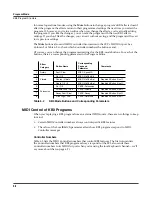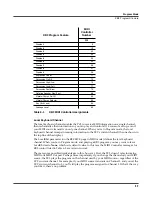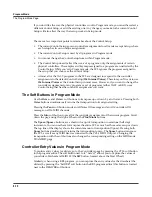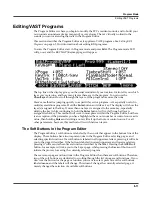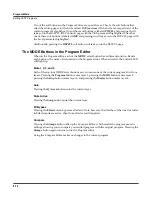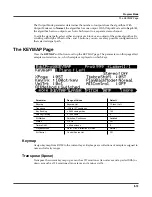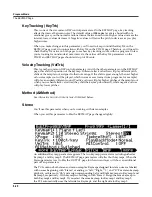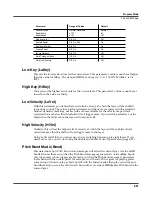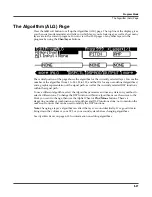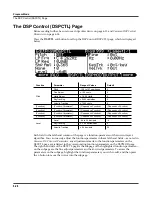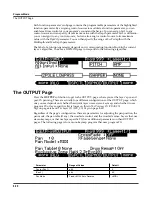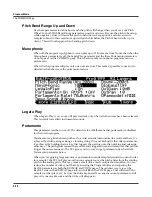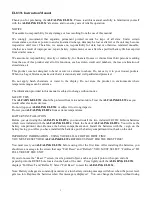
6-20
Program Mode
The KEYMAP Page
Key Tracking (KeyTrk)
This is one of the six common DSP control parameters. On the KEYMAP page, key tracking
affects the interval between notes. The default value of
100 cents
(a cent is a hundredth of a
semitone) gives you the normal semitone interval between each note. Higher values increase the
interval; lower values decrease it. Negative values will cause the pitch to decrease as you play
higher notes.
When you make changes to this parameter, you’ll need to keep in mind that KeyTrk on the
KEYMAP page works in conjunction with KeyTrk on the PITCH page. Therefore, you’ll need to
check the KeyTrk value on both pages to see how key tracking works within a program. Unless
you’re looking for nonstandard note intervals, the values of the KeyTrk parameters on the
PITCH and KEYMAP pages should add up to 100 cents.
Velocity Tracking (VelTrk)
This is another common DSP control parameter. As with the other parameters on the KEYMAP
page, this shifts the position of the keymap. Different attack velocities will play different pitch
shifts of the sample root assigned to that note range. If the shift is great enough, the next higher
or lower sample root will be played, which in some cases (many drum programs, for example)
will play an entirely different sound. Positive values will play higher pitches of the sample root
when you use hard attack velocities (they shift the keymap downward), while negative values
will play lower pitches.
Method (AltMethod)
See
Alternative Switch (AltControl and AltMethod)
below.
Stereo
You’ll use this parameter when you’re working with stereo samples.
When you set this parameter to
On
, the KEYMAP page changes slightly:
An additional Keymap parameter appears. The two keymap parameters are distinguished as
Keymap 1 and Keymap 2. The KEYMAP page parameters will affect both keymaps. When the
Stereo parameter is set to
On
, the OUTPUT page for the current layer will show an additional
pair of Pan parameters.
The PC3 contains both stereo and mono samples
.
Keymaps designed for stereo use are labeled
with names beginning with "Stereo" or ending in "Left," "Right," "L," and "R." For stereo keymap
playback, set Stereo to "On" and assign corresponding Left and Right keymaps to Keymap1 and
Keymap2, respectively. With keymaps which begin with "Stereo" assign the same keymap to
both Keymap1 and Keymap2. If you select the same keymap for Keymap1 and Keymap2,
the PC3 automatically uses the left side for
Keymap1, and the right side for Keymap2.
Summary of Contents for PC3
Page 24: ...1 6 Introduction Options ...
Page 50: ...4 4 The Operating Modes Using the Modes ...
Page 174: ...7 54 Setup Mode The Utility Soft Buttons ...
Page 178: ...8 4 Quick Access Mode Making Your Own QA Banks ...
Page 204: ...9 26 Effects Mono Algorithms ...
Page 266: ...A 2 MIDI Implementation Chart ...
Page 308: ...Index x ...

